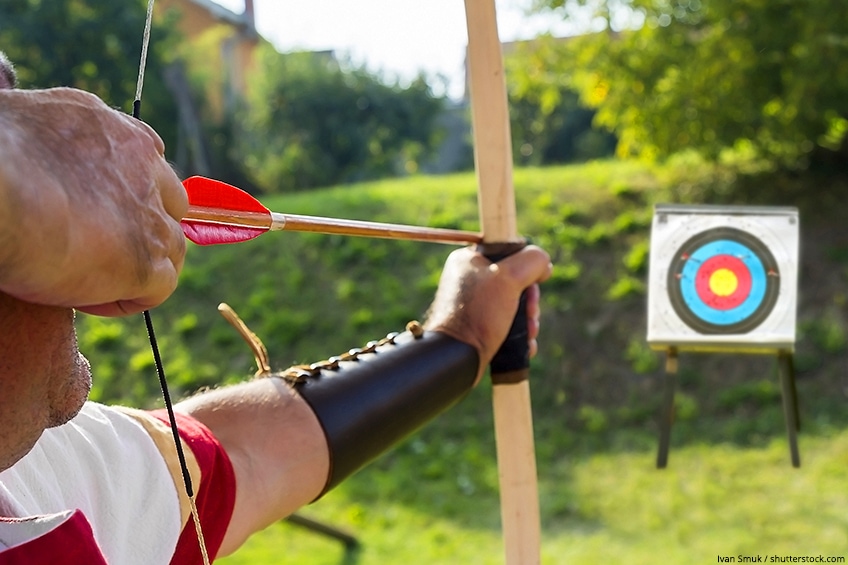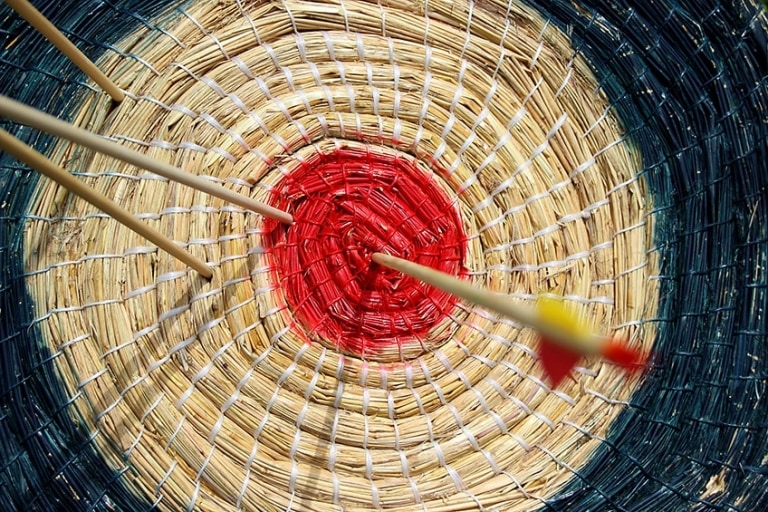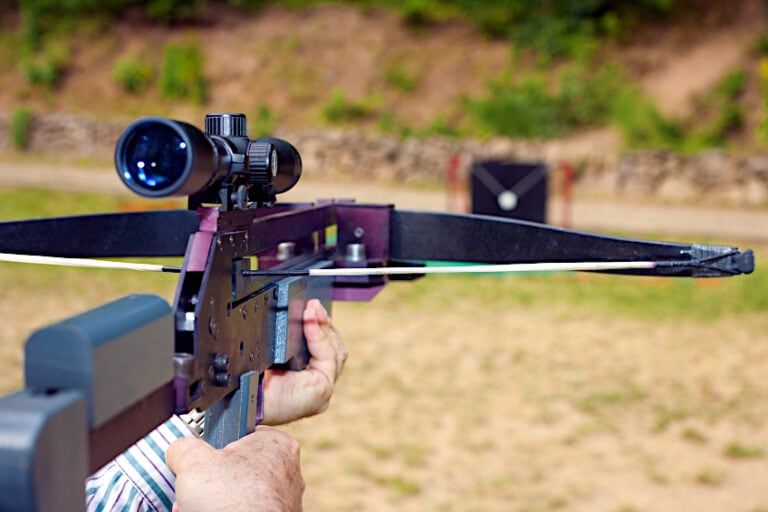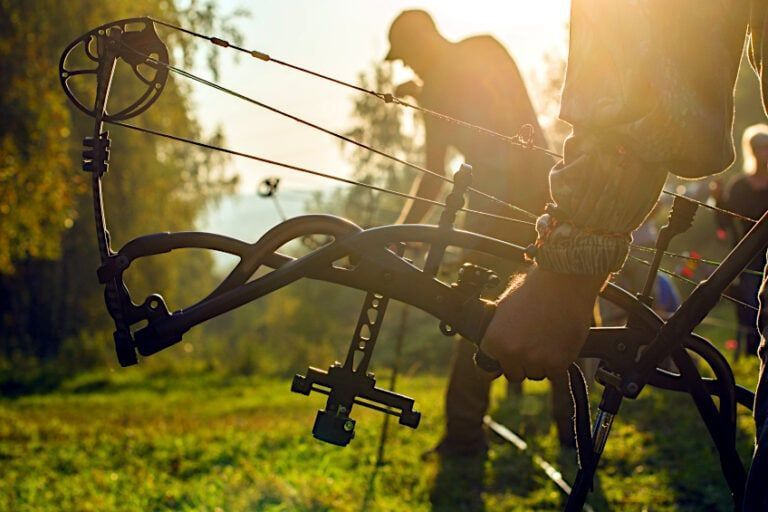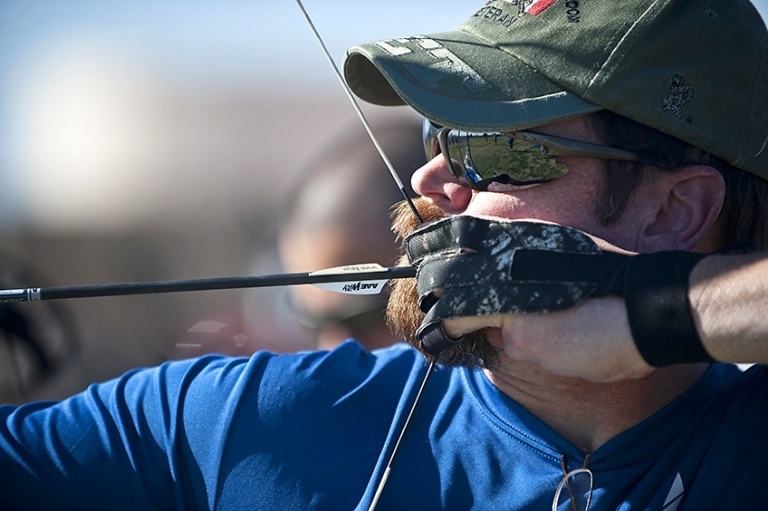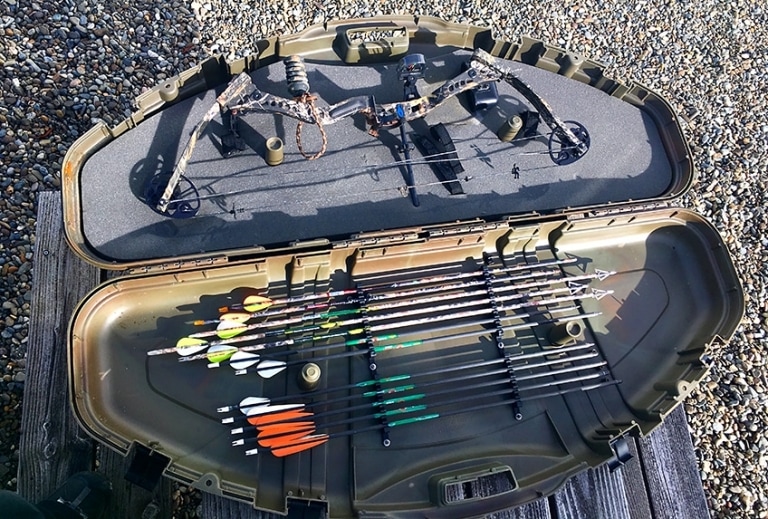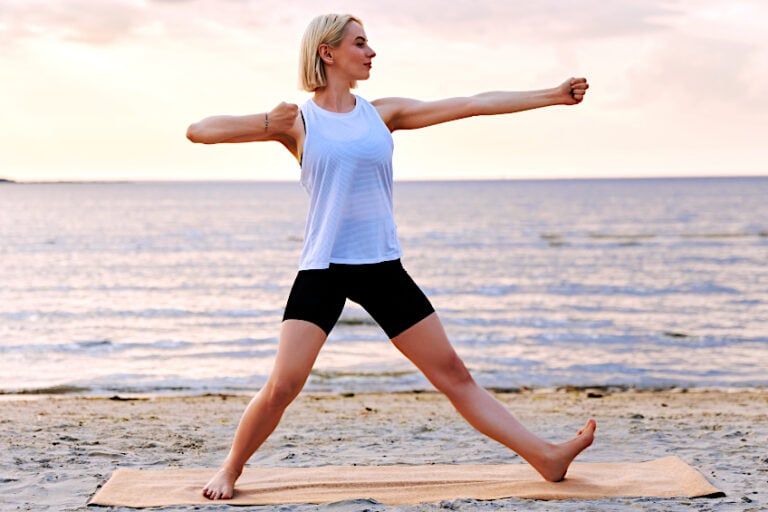Best Longbows – Guide to the best Longbow
You want to learn archery and buy a bow? Are you very traditionally-minded and maybe even want to buy an English longbow? Wondering what the best longbow is? Then you have to consider certain things because an English Longbow is not the right thing for everybody. Have a look at one of our longbow reviews:
Inhaltsverzeichnis
Which Bow Type Should I Choose?
The market for bow classes is large. If you have just started with archery, you might be overwhelmed by the variety and the archery terms. Which bow should it be? A traditional recurve bow? Or rather a modern compound bow? Or would you rather buy a longbow? The possibilities of buying a bow seem to be unlimited.
It’s hard to make the right decision. After all, not every shooter wants to have four different bows standing around at home. If you have difficulties deciding on a bow or making your way through the jungle of archery terms when buying a bow, we are happy to help you with our longbow guide.
What is a Longbow?
A longbow resembles some of the original forms of the bow. In a relaxed state, it is rod-shaped. With a tensed tendon it can easily take on different shapes: There is the self bow, which comes in a D-shape, as well as the longbow with flattened throwing arms. The latter represents the more modern version of the bow.
The so-called selfbow consists of only one piece of wood, which has been worked until it is flexible, but also robust enough to withstand the great strain of the shot.
The longbow got its name from its sheer size: A longbow is traditionally as long as the shooter himself. Today’s longbows are however smaller and also their draw weight, which in the Middle Ages was 100 lbs, is lower today at about 50 lbs. This makes these bows a bit more handy even for inexperienced shooters, but they are not as easy to use as many other types of bows. The recurve bow is and usually remains the most suitable bow for a beginner, whereas the longbow is in some respects not so easy to use. You should consider this before you choose a longbow.
To be considered a longbow, it must be at least 150 centimeters long for women and young people. Men shoot with a bow that is at least 160 centimeters long. The bow is measured from one tendon cam to the other.
Another difference to other types of bows is that the string of the longbow does not rest on the throwing arms, but only touches the bow cams, the tips.
In the original construction, different materials were of course used than today. The traditional wooden construction method was partly replaced by carbon and glass fiber.
An English longbow is still made of purely traditional materials such as horn and wood, mostly elm or yew. Carbon, fibreglass and other modern components have no place in an English longbow. Furthermore an English longbow has a special size: It is at least 1.80 meters long. It also has a higher draw weight.
Over the course of time, the construction of the longbow was changed a little bit so that today Reflex Deflex Bows and Backset Bows are available. The Reflex Deflex bow uses the recurve bow shape so that the limbs are curved and can therefore store more energy. However, not only the limbs are curved – away from the shooter – but also the grip – towards the shooter. In the backset construction, the limbs are only slightly curved away from the shooter.
A special form of the longbow is the American longbow, also called the flat bow. Its cross-section is a little more rectangular and therefore more robust and less susceptible to breakage.
The longbow is also well known in Japan, there under the name Yumi. It is used for traditional Japanese archery.
Pros and Cons of Longbows
Pros
- The size of the longbow makes aiming and therefore hitting easier
- The longbow is the perfect bow for medieval reenactment
- It is slightly cheaper than modern bows
- It comes without great equipment like visors, arrow rests, stabilizers, etc.
- It is not noticeably inferior to many other bow types in terms of shooting power
Cons
- The size of the longbow is seen by us not only as a pro but also as a con because it not only makes the transport a little more problematic but the shooter also becomes more immobile
- The enormously high draw weight of the traditional English longbow is difficult for many shooters to handle
Our Recommendation – STRINGRAY Hickory Longbow
If you want the beauty and nostalgia of a traditional wooden handcrafted longbow, you cannot go wrong with this bow from Stringray. This company not only gets top marks for customer service, but also made it to the number one spot for handmade archery equipment on Amazon. While the bow arrives ready to shoot, it is fully customizable for those archers who like to work on their bows. As it is entirely made from wood, you can stain and refinish it, and even sand the pistol grip down to match your hand exactly. Ideal for both target shooting and hunting this bow is light and shoots really well. Keep in mind that this bow will require regular oiling and treatment, just as you would for any other handcrafted woodwork item.
- Fully handcrafted from Hickory wood and polyurethane sealed
- Draw length of 28", but safe to a 30" draw
- Pistol grip with tip overlay design, light and well-balanced
- Fully handcrafted wooden bow
- Reputable brand
- Fully customizable to suit user
- Good value for money
- Not ideal for users who don’t like to work on their bows
- Entirely made from wood, so may pick up a bend over time
- Needs to be properly maintained or it may crack or break
How to Choose a Longbow
As banal as it may sound – if you are a beginner in archery, you should not necessarily buy a longbow that is as big as you are. Better start with a slightly shorter model. Longbows that are between 43 and 72 inches long make for the best longbow for hunting.
You should also keep an eye on the size of your hands because if you have rather small hands, the use of a very large longbow will not be fun.
The last parameter that remains is the draw weight, and this is perhaps the most important selection criteria for or against a bow when you want to buy a longbow. The chosen draw weight depends on your gender, your strength, and your experience in archery. When in doubt, you should start with a lower draw weight before you lose the desire to shoot with a bow.
Another question is that of handedness. If you are left-handed, you will need a left-handed bow, because you are using it mirror-inverted.
As far as the other criteria are concerned, we will be happy to advise you below. Just read our tips for buying a cheap longbow, but the best Long bow.
Select Your Optimal Size
As a rule of thumb, the longbow should be about the same size as the archer. However, today there are also bows available that are a little shorter and therefore handier, but still, pass as longbows. If you are still a beginner in archery, you should perhaps fall back on such bows. They are not only easier to transport, but also to handle.
For teenagers and women, a longbow from about 150 centimeters upwards is recommended; men should choose a longbow with a size of 160 centimeters upwards. Of course, you have to measure how big the bow should be – of course, there are also very tall women for whom a bow of only 150 centimeters would not be the right one. In contrast, there are also small men for whom a shorter bow is suitable. It is important that the shooter feels comfortable. Maybe you can ask a local shooting club if you are allowed to try out several different longbows – or bow types in general.
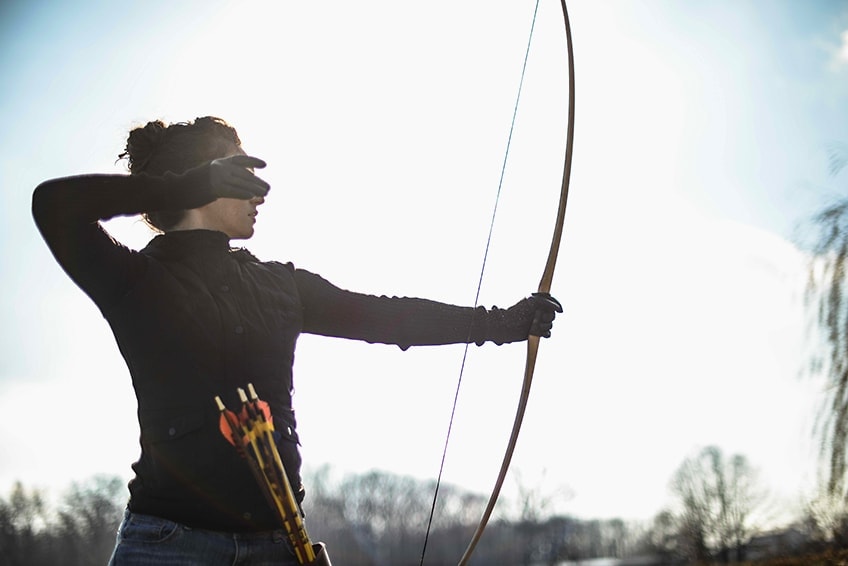
Which Material is Suitable?
Traditional longbows are made of wood, usually maple, walnut, or ash. The modern longbows also have reinforcing material such as glass fiber fabric. This makes them more robust and at the same time more flexible.
An English longbow was made from Elm or Yew. Incidentally, Yews were so overpowered by the extreme demand for arrows and bows made of Yew wood in the Middle Ages that they are now considered almost extinct in the wild and are protected under nature conservation laws. Also for this reason the materials used today for the English longbow construction are Maple, Robinia or Maclura, which generally have the same characteristics as Yew. Robinia is the preferred material for flat bows because it is harder and more difficult to bend than maple or Maclura.
The Optimal Pull Weight
If you want to buy an English longbow, you should definitely consider the draw weight.
Simply put, the tension weight describes the force needed to tension the tendon of your bow. It is given in pounds and is an important size if you want to buy a bow. You should definitely pay attention to it, otherwise, you will not have much fun with your longbow.
Fortunately, we don’t live in the Middle Ages anymore, otherwise, you would need a few years of strength training to be able to draw a longbow at all. The draw weight at that time was so high that even skilled archers would have their problems with it nowadays.
Modern longbows are of a different caliber, so that you will certainly not suffer any physical deformations caused by a long-term practice of archery, as was the case with skeletons of English archers from the Middle Ages.
Which draw weight is suitable for you, you can read in our separate article about bow draw weight. In case of doubt, it is better to use a lower traction weight, because especially at the beginning it is not so much the effort that counts but the right technique and precision.
Bow Weight
Even if it sounds simple, the weight of the bow is of great importance. Because if this is too low, it is difficult to keep him still. With a bow that is too light, the arrow will not hit the target as precisely as with a heavier bow.
For modern bow types, there are special stabilizers that add extra weight. However, shooting with a longbow is traditional or intuitive, which means that usually no stabilizers are used. So when buying a bow you should make sure that the bow is heavy enough for you.
Maintenance of the Longbow
After each use, you should relax your longbow so that the tendon does not rest constantly on the throwing arms. Otherwise, the string and limbs will wear out quickly.
Take care not to store the bow as well as the used arrows under large temperature fluctuations, because otherwise the material could expand and contract, which can also lead to damage in the long run. This is especially true for longbows made of different materials, as they have different coefficients of expansion. Longbows that are made exclusively of wood are not quite as sensitive, but you should still be on the safe side.
Check your longbow before each use, so that no injuries are imminent and minor damage can be repaired before it grows into major damage.
The tendon should be waxed once or twice a year. For this purpose, you take a lint-free cloth and special tendon wax. Apply the wax to the bowstring from all sides and rub it in thoroughly with the cloth. Note that friction can cause a lot of heat, so there is a risk of injury. Be careful and fold the cloth over several times to protect your fingers. Of course, you should not apply all the wax right away but use it sparingly.
Choosing Longbow Accessories
Even though the longbow is shot intuitively, i.e. without visor and other technical aids, the range of available longbow accessories is wide. In our longbow accessories guide, we give you an overview of what is useful and what is not.
Best Arrows for Longbows
You can use the longbow with all types of arrows. However, traditional or intuitive archery is done with wooden arrows. These are not very robust so that theoretically they can show small damages after each shot. You should therefore check them for cracks in the material not only before each use, but really before every single shot.
There are also fiberglass, aluminum, carbon, and aluminum-carbon arrows. Fiberglass arrows are well suited for beginners, as they are relatively cheap in comparison. However, you should not use them with a bow that has a high draw weight, otherwise, they can splinter.
Aluminum arrows are the professional arrows among the arrow types. They are robust and have not only wonderful flight characteristics but also their price. For this reason and because they bend quickly if you miss the target, they are generally used more by professional shooters.
Carbon arrows are relatively expensive, but have many advantages: They are not only light but also very stable and offer the same flight characteristics as aluminum arrows.
In addition to the spine value, the length of the arrow is a decisive factor for the success of the shooter. Spine value and length are directly related, because the longer the arrow, the higher its spin value should be. The length of the arrow depends on the length of your draw. You can easily determine the latter with our online calculator.
To do this you must first determine your span. Stand with your arms loosely spread at shoulder height and have a second person measure the length of your arms from one middle finger to the other. The value obtained is your span.
Bowstring
Bowstrings are always composed of several strands. They must have certain characteristics:
- The load elongation must not be very high
- The deadweight must be as low as possible
- The ratio between weight and tear strength must be optimal
Only with these characteristics can a bowstring perfectly transfer its power to the arrow.
In earlier times, traditional bows for longbow hunting had tendons made of various natural materials such as bamboo or hemp fibers, silk, processed animal tendons, or – supposedly – even human skin! Modern bow tendons are made of stretchy high-tech materials such as Dacron or Fast Flight.
Care should be taken with longbows because they cannot be used with FastFlight and other tendon plastics! The throwing arms could break due to the too high load. Better fall back on Dacron.
For the string of your longbow, you can consider whether you would rather invest in a Flemish spliced bowstring or an endless string. The former has two advantages:
- Splicing the tendon auricles gives the bowstring a more traditional appearance
- The elasticity is significantly higher than that of the continuous tendon, thus protecting the limbs of the longbow
Keep in mind that the tendon for a longbow should be about eight centimeters shorter than your bow in a relaxed state. You can easily measure this.
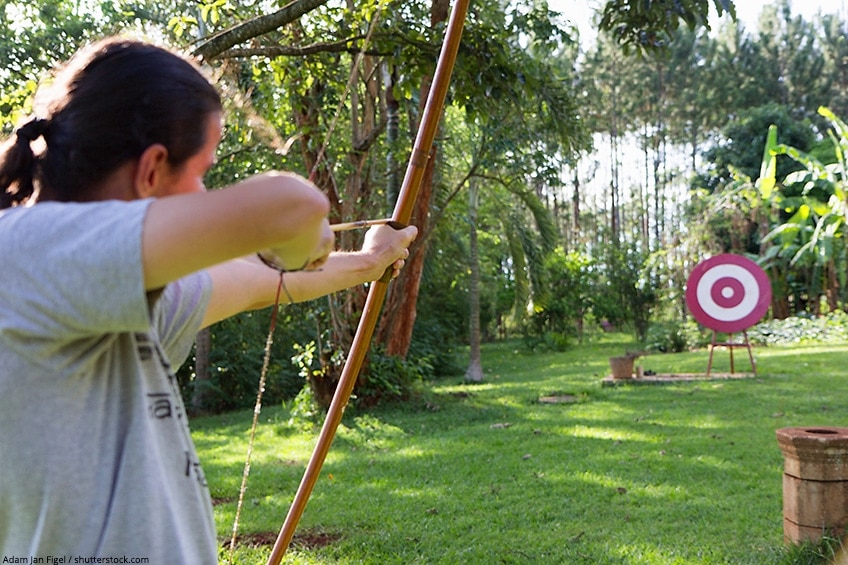
Arrow Rest
Each bow can of course be used with an arrow rest, but the longbow is traditionally shot over the back of the hand. So if you are more of a follower of tradition, do without the arrow rest or use a leather arrow rest.
If you prefer to shoot the arrow over the back of your hand, you should consider wearing a glove, because hard arrow feathering can lead to superficial but nevertheless painful cuts. Of course, archery is less fun that way.
By the way, there are different opinions in the archery world about the arrow rest – many traditional shooters swear by shooting over the hand, as they claim that this leads to a better feeling and thus a higher hit rate. Other experienced archers, on the other hand, consider this to be nonsense and advise to use either an arrow rest or a glove, but never bare skin.
Finding which of these fits your needs best is matter of trial and error. We advise you to buy an arrow rest or at least a glove.
Other Useful Accessories
Also for longbow shooters, the protection is indispensable for archery. Therefore you should not do without arm protection. Especially for beginners, long arm protection is necessary; for advanced users, arm protection may be short. As a traditional archer you don’t choose a plastic arm guard, but a leather arm guard that fits you and your bow.
For longbow shooters there are traditional targets made of straw. So if tradition is very important to you when shooting, you can fall back on it instead of Karphos, foam, or Styroline.
History of the Longbow
The oldest arch ever dated is estimated at 10,000 years. It probably had the typical simple stick form when relaxed. The oldest longbow found on English soil dates from the third millennium BC. Sources report that the Vikings brought the longbow to England on their raids. Their enemies quickly copied it and specialized in the high art of archery.
Since then the longbow stands for English tradition like no other bow. Specially trained English archers are said to have been able to shoot up to twelve arrows per minute – and to do so accurately at a distance of up to 200 meters!
According to reports, there were even bows with a draw weight of up to 120 lbs. These bows were probably able to penetrate heavy armor and even wood up to several centimeters deep. Today it is hard to imagine that there is anyone who can wield such a bow.
The English longbow was often a weapon that could decide the outcome of a battle. The Battle of Crécy in 1346, for example, ended favorably for the English, even though they were far inferior to the French in numbers – solely because of their archers. The same was true of the Battle of Azincourt in 1415.
By the way, the longbow was originally not developed for war, but for hunting.
The first firearms were developed at the end of the 15th century. Gradually the longbow as a weapon of war receded more and more into the background. Today, like all types of bows, the modern longbow is no longer considered a weapon but a piece of sports equipment.
Frequently Asked Questions and Advice
Which Arrows Should I Use for a Longbow?
- The longbow is the only bow with which wooden arrows are still shot today; however, these should be checked before each shot
- Of course, you can also use other types of arrows: carbon, aluminum, fiberglass or aluminum-carbon
- However, the traditional arrows are and remain wooden arrows
How Far Does an English Longbow Shoot?
- There are reports that English archers were able to shoot up to 350 meters with one long-range shot; however, their bows had a draw weight that cannot be handled by today’s archers
- If the archers were looking for precision, a distance of about seventy meters was easily mastered – this even applies to moving targets!
- Exactly how far a longbow can shoot today, we cannot specify, because this depends on the draw weight, size of the bow and technique as well as the experience of the archer

